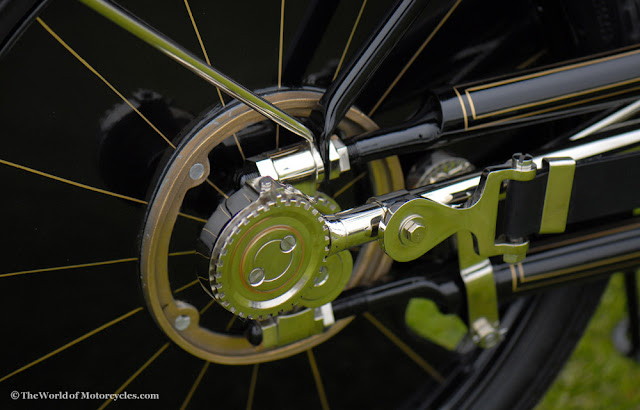The World's First Motorcycle
The Hildebrand & Wolfmüller was the world's first mass-production two-wheeled motor vehicle to be dubbed a "motorcycle," or "motorrad" in German. After dabbling with steam power Henry and Wilhelm Hildebrand, along with partner Alois Wolfmüller, designed their revolutionary 1488cc Hildebrand & Wolfmüller, which was patented in 1894.
Although Gottlieb Daimler is credited with being the "Father of the Motorcycle," his Einspur "boneshaker" motor bike was actually a "hybrid" motor-driven bicycle with a wooden bicycle frame, and wooden wheels. Following on the neels of Daimler was the de Dion-Bouton, the Orient Aster, and the E. R. Thomas, all using a bicycle chassis.
The Hildebrand & Wolfmüller Motorcycle
Wolfmüller's patented design (Patent No. 78553, January, 20 1894) utilized an all metal hollow tube-frame that was revolutionary for the period. The power-plant was a horizontal (parallel) two-cylinder four-stroke 1488cc engine that was water-cooled.
The H&W had no clutch, and power was delivered to the rear wheel via locomotive-style pushrods which were linked directly to the engine's pistons. The solid rear wheel as a flywhell. The pushrods were returned by the force generated from two large rubber straps - one on each side of the motorcycle.
The H&W produced 2.5bhp at 240rpm, with an incredible top speed of close to 30mph! In total, several hundred Hildebrand & Wolfmüller motorcycles were sold, but fierce competition drove the company under in 1919.
The 'Motocyclette,' designed by Felix Millet, was introduced one year prior to the Hildebrand & Wolfmüller, that used an aviation-style radial five-cylinder engine, but Millet's Motocyclette never went into mass-production.
1488cc parallel-twin motor
Locomotive-style pushods, hub cam with reduction gear, and rubber band strap
Water cooling reservoir
Source from www.theworldofmotorcycles.com









No comments:
Post a Comment